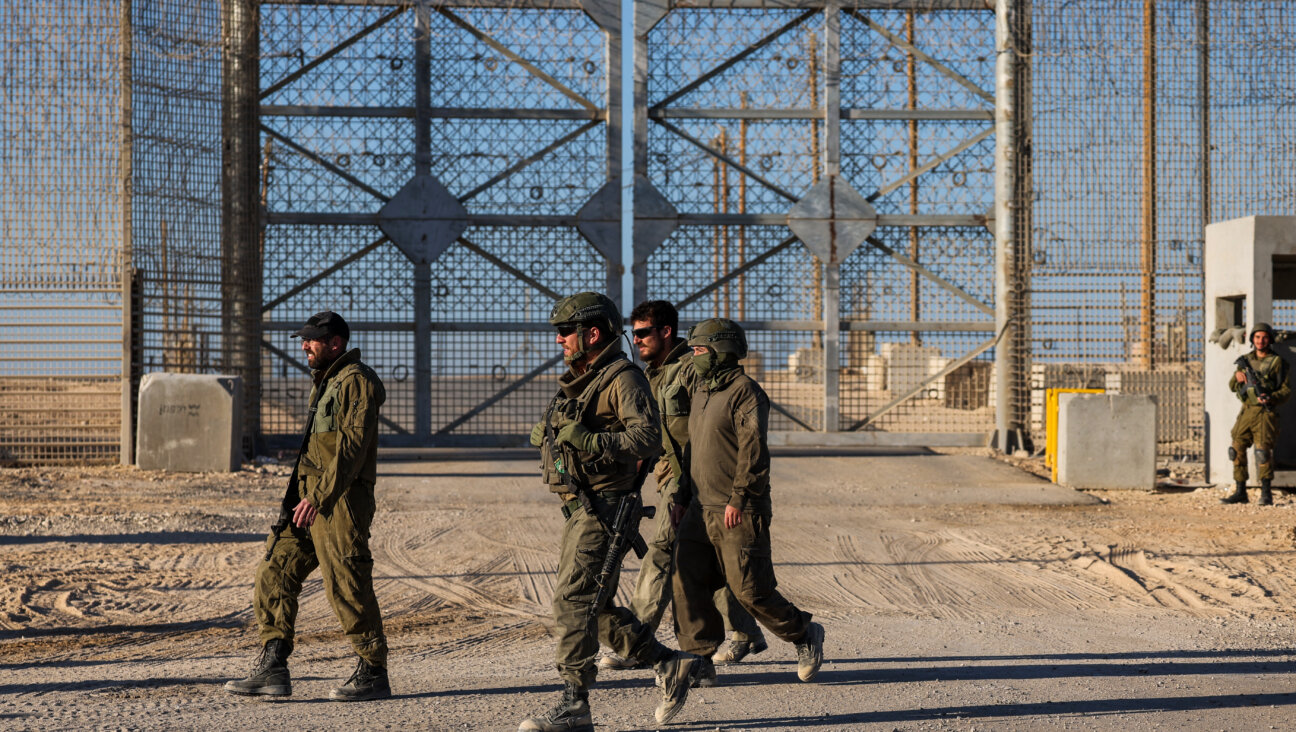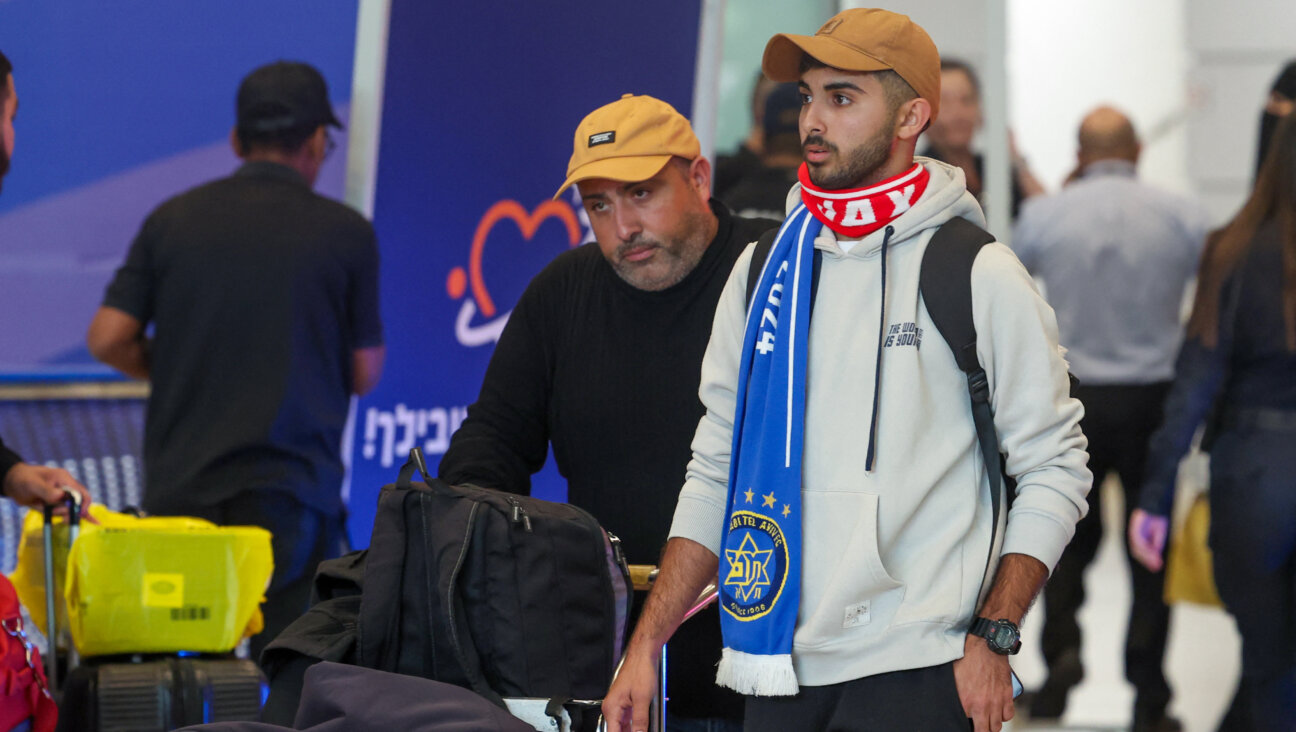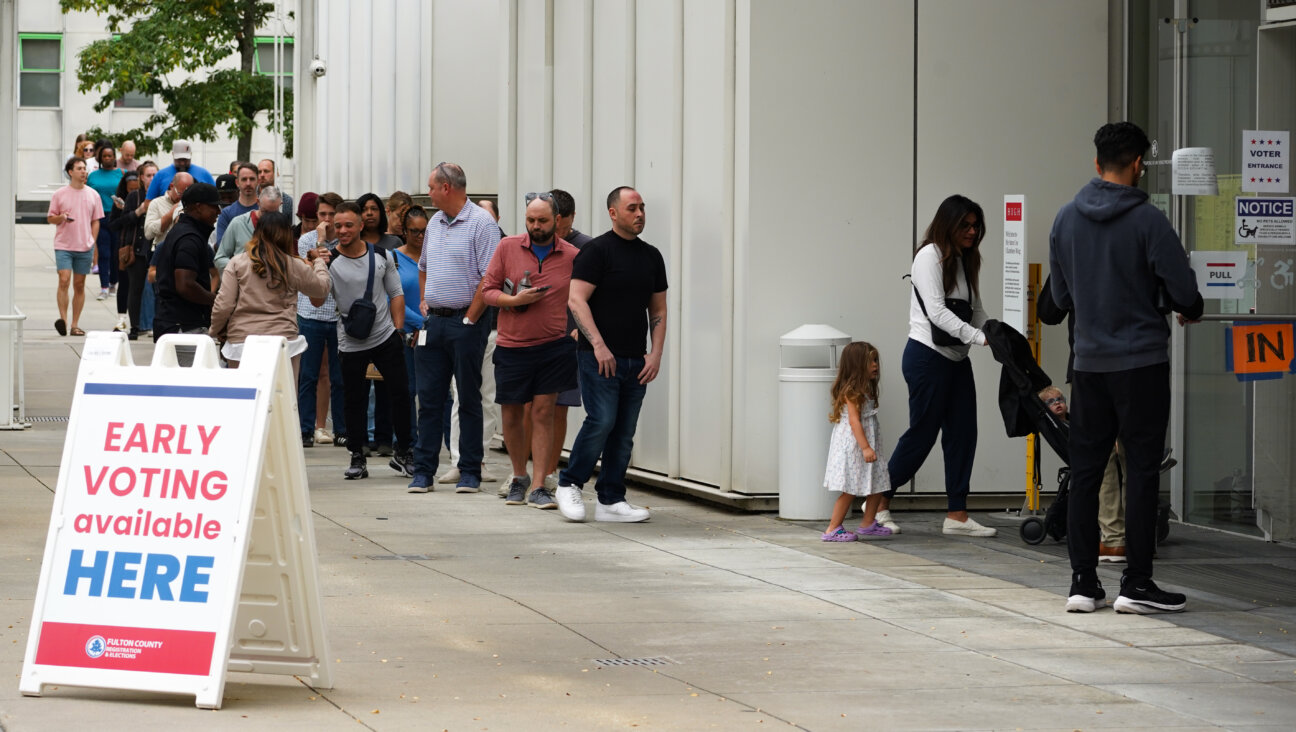Libeskind’s WTC Vision Was Born of Socialist Bronx
As a young man living in the Amalgamated Houses in the Bronx, Daniel Libeskind — the architect selected this week to rebuild the World Trade Center site — recalls being immersed in an environment in which progressive politics, Yiddish literary debates and a community spirit thrived.
“It shaped me completely,” Libeskind told the Forward.
It’s that same universalistic, secular Jewish attitude that underpins his work today, Libeskind said. “Most architects are concerned with buildings — actually, I’m concerned with people,” he said. “There’s a big difference. Most architects are concerned with technology. I’m much more interested in the story a city tells, a story a building tells, a story a space tells.”
As for the story he’s writing for downtown Manhattan, the 57-year-old Libeskind said, “It’s the story of New York. The story of the tragedy which happened, how, from the depths of what befell New York, a city rises into a pinnacle of optimism and reaffirms what it is, what it always was, what it will be.”
Two days after winning the closely watched competition, the world-famous architect, wearing his trademark cowboy boots and thick-rimmed glasses, sits eating a hard-boiled egg at the restaurant at the Four Seasons Hotel.
A short, slight man who looks one part Old World intellectual, one part black-clad art-world icon, Libeskind appeared cheerful and serene as he enjoyed breakfast with his wife and business partner, Nina.
Winning the competition to rebuild at Ground Zero would be a remarkable achievement for any architect — but it is perhaps more so for a man with a comparatively short resume who was not initially invited to compete. “I’ve always been an underdog,” Libeskind said, smiling. “Coming where I came from, you have to be an underdog.”
Nonetheless, from the outset, some critics suggested that Libeskind was the obvious choice to design the project: the son of Holocaust survivors, he was an immigrant who thrived in New York City and became an architect whose stock in trade is memory. In his first major project — the groundbreaking design for the Jewish Museum of Berlin — every angle conveys a sense of loss, memory and hope.
Like the museum, Libeskind’s redesign of the World Trade Center site is loaded with meaning. Central to his plan are the foundations of the original buildings; the pit — which has come to be known as “the bathtub” — will be left virtually untouched, with the slurry wall acting as a reminder of the destruction as well as “the durability of democracy,” as he has said. A spire atop an office tower will rise to a symbolic 1,776 feet and the Wedge of Light, a public space, is designed so that no shadow will be cast on the morning of each September 11.
In drawing on his past, Libeskind also brings a lesser-known Jewish sensibility of a distinctly non-tragic sort: his “fantastic” teenage years growing up in the “completely Jewish neighborhood” of the Amalgamated Cooperative Houses, a hotbed of Yiddish socialism built and operated by the garment workers’ union. His parents, he said, were avid readers of the Forward. Libeskind spent his summers at Camp Hemshekh, a Yiddish socialist camp in the Catskills, populated mostly by children of survivors — and where he also met his future wife.
“Coming to New York was an affirmation of the things I believed in,” he said of his arrival in the United States at age 13. “You could speak in Yiddish, you could do whatever you want. It was the Jewish capital — no doubt about it.”
Nonetheless, he said, “New York is a very heterogeneous city; there’s many walks of life. But that’s also Jewish — it’s not one kind of thing, it’s a myriad of things. It’s ever changeable, ever interesting.”
Libeskind was born in Lodz, Poland, and lived, with his parents and sister, behind the Iron Curtain until he was 11. “Postwar Poland was a tremendously antisemitic country,” he said. “The reason why I played the accordion instead of the piano is because my parents were afraid to bring a piano in the courtyard; it would have been a stigma, a terrifying thing. So I could have a piano — but in a suitcase, so it could be hidden away, snuck in and out of the courtyard without being noticed by the neighbors.”
As it happened, Libeskind became a virtuoso on the instrument, appearing in the first broadcast of Polish television, winning competitions and, later in life, supporting his family with his talent. “My wife said I often earned more money playing the accordion than I did as an architect,” he quipped.
When Libeskind was 11, his family was among the first Polish Jews permitted by the communist government to emigrate to Israel. “It was one of the happiest moments of my life,” he recalled. Two years later, he and his family were en route to New York. “Our greatest feeling here was a total feeling of liberation from oppression and difficulties,” he said.
“Somehow I drifted into architecture because it seemed the thing that combined many of my interests,” he said. “Music is part of architecture: sound, rhythm, tempo, acoustics, our sense of balance. There’s the drawing, painting, artistic part of it as well as science, physics, mathematics, constructability and technology.”
Married at 23, Libeskind practiced an esoteric type of architecture, philosophizing and teaching rather than building. As his postings changed, he and his family — his children are ages 25, 23 and 14 — have lived everywhere from Los Angeles and Kentucky to England and Finland.
Throughout his travels, Libeskind would painstakingly avoid Germany, sometimes taking circuitous routes so as not to cross its border. Nevertheless, after winning the competition to design Berlin’s Jewish Museum, he and his family moved to the German capital in 1989. “It was a shock,” he acknowledged. “There were doubts such a museum would ever be built. But we were there. We were there to represent not just the museum but what Jewish history, Jewish memory means in the city.”
In a bizarre twist of fate, the September 11 attacks happened the day after the opening of the museum. “I was thinking of Jewish history, how new eyes were opened,” Libeskind said. “And then this attack came and I thought, one never knows how history develops. I was determined to do something. I felt personally attacked — it wasn’t just that a building was attacked, people were killed — but I was personally insulted.”
Indeed, Libeskind was the lone architect bold enough to use “I” while other finalists were describing their visions for the site in a detached third person. Even his remarks at the announcement ceremony last week struck a personal chord by evoking his immigrant status.
Nonetheless, he has taken a remarkably public stance on the project, having met tirelessly with survivors of the attack, community groups and stakeholders. “It’s the first time in a long time that people realized architecture and planning are civic arts,” Libeskind said.
Still, as the plan evolves from a conception to a reality, critics are wondering if — or when — “collaboration” will compromise the design. “I have to draw a line — people will see that line,” he said. “It’s not about a line here or there, it’s not about the details. It’s about the fundamental vision.”
While the design was met favorably by most critics and the public — popular opinion was 92% positive, according to the Lower Manhattan Development Corporation — some have raised eyebrows at the plan’s emotionalism. A New York Times editorial worried about “a crowding of the site with icons of memory and meaning” while the Times of London said Libeskind’s design sometimes “drifts into theme-park territory.”
Libeskind, however, is unfazed. “I was very offended when someone said my tower — at 1,776 feet — was a kitschy number, as if the date of independence could ever be kitschy,” he said. “I don’t think they are metaphors; they are realities. They are not just empty symbols; they are the true basis on which I live.”
“Those people who don’t acknowledge memory have no future,” Libeskind said. “Memory is not something negative, you have to channel it into something positive, an optimistic spirit. That’s also a Jewish spirit. Golda Meir once said that pessimism is a luxury that a Jew cannot afford to have. I feel that’s absolutely true.”
A message from our CEO & publisher Rachel Fishman Feddersen

I hope you appreciated this article. Before you go, I’d like to ask you to please support the Forward’s award-winning, nonprofit journalism during this critical time.
At a time when other newsrooms are closing or cutting back, the Forward has removed its paywall and invested additional resources to report on the ground from Israel and around the U.S. on the impact of the war, rising antisemitism and polarized discourse.
Readers like you make it all possible. Support our work by becoming a Forward Member and connect with our journalism and your community.
— Rachel Fishman Feddersen, Publisher and CEO






















